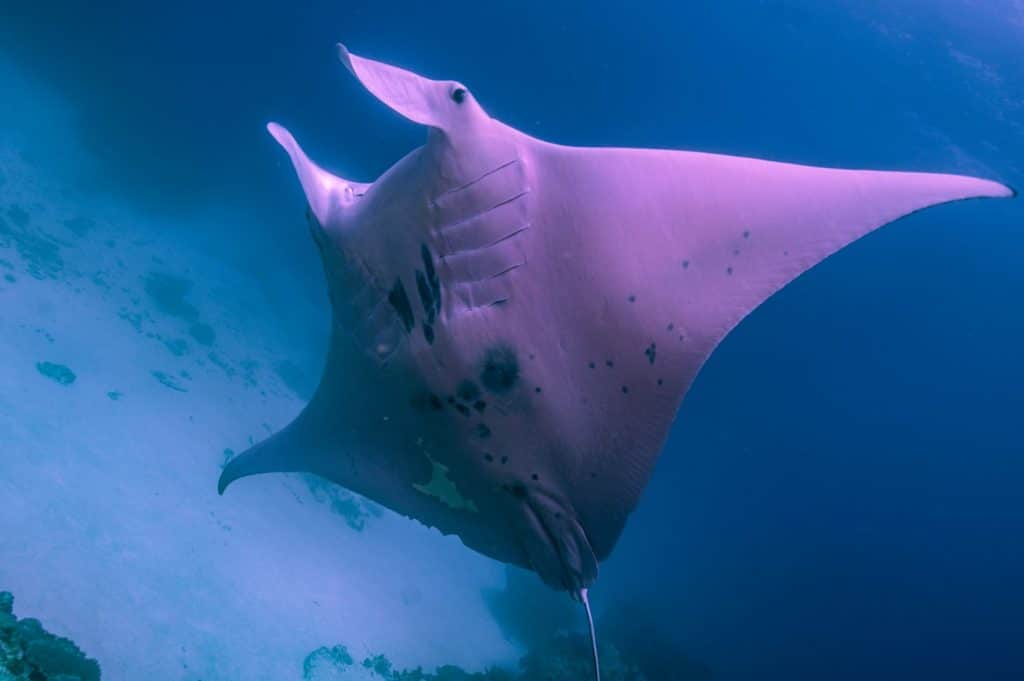
Lady Elliot Island Eco Resort Dive Team member Ben Canty has had a lucky encounter with the world’s only known pink manta ray, Inspector Clouseau.
Ben excitedly spotted the rare pink manta ray at a popular dive site known for manta ray encounters, ‘Lighthouse Bommie’, this week.
Inspector Clouseau is number #900 in the Project Manta photo identification database.
Clouseau has gained viral status on social media and has even earned his own cocktail ‘Pink Manta’ on Lady Elliot Island.
But why the pink colouration?
Manta rays are typically grey to black on their dorsal (upper) side and white on their ventral (underside), however, the underbelly of this particular individual is a very distinct shade of pink due to a genetic mutation.
The first recorded sighting was on Lady Elliot Island in August 2015.
In 2016 one of the Project Manta researchers, Amelia Armstrong, took a small skin biopsy of his underbelly to get a better understanding of the mutation.
Clouseau has been sighted numerous times since with the last recorded sighting in 2019.
Ms Armstrong said Inspector Clouseau was the world’s only known chevron manta ray that had a black back and a bright pink belly.
“The individual appears healthy with no unusual or uncharacteristic behaviours, and given the persistence of the pigment over time, we have also ruled out infection,” she said
“We are hoping to further investigate this individual to confirm our hypothesis, but our current understanding is that this colouration is a result of a different expression in the melanin.
“It is potentially an example of erythrism, where an animal’s skin, hair, feathers or fur exhibits a reddish pigmentation.”
Rays researched for Project Manta
Project Manta is a multidisciplinary research collaboration spearheaded by Dr Kathy Townsend of the University of Sunshine Coast, focusing on the population ecology and biology of manta rays within Australian waters.
The group has been visiting Lady Elliot Island for many years and has identified over 1500 individual manta rays off the East Coast of Australia with approximately 80 per cent of those sighted in the waters surrounding Lady Elliot Island.
The identification comes from photo-IDs and citizen scientists who send in photos and sightings information.
If you’re lucky you could name your own manta ray.
The team at Lady Elliot Island Eco Resort and Project Manta are extremely happy that the pink manta has attracted attention for manta ray research worldwide.
Readers are encouraged to support Project Manta’s research by submitting underbelly photos of manta rays via their Facebook page or email project.manta@uq.edu.au




